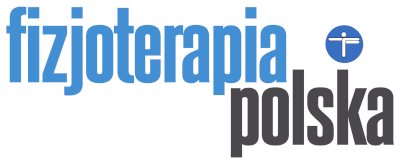Kamil Szcześniak, Iwona Sarna, Anna Mierzyńska, Rafał Dąbrowski, Edyta Smolis-Bąk
Kamil Szcześniak, Iwona Sarna, Anna Mierzyńska, Rafał Dąbrowski, Edyta Smolis-Bąk– The application of console games – exergames in cardiac rehabilitation: a pilot study. Fizjoterapia Polska 2023; 23(4); 182-191
DOI: https://doi.org/10.56984/8ZG20AR1N
Abstract
Introduction. Too many people avoid regular physical activity, and therefore various strategies are taken to increase their motivation. In recent years, exercising with the use of console games, i.e. exergames, has gained popularity.
Material & Methods. The study included patients referred for an early post-hospital inpatient rehabilitation. All subjects participated in endurance training on cycle ergometers and in fitness exercises (dynamic, stretching, coordination, balance) with elements of resistance training 5 times per week. In the test group, the rehabilitation program was complemented with training with ActivLife equipment. Training sessions took place every day, 5 times a week. They involved training program consisting of 7 exercises that develop motor abilities: coordination, strength and balance in the form of activities similar to traditional exercises – squats, lateral flexion, three-plane movements of the upper limbs and torso deflections in sagittal plane. Trainings lasted from 15 to 20 minutes.
Results. After rehabilitation significant improvement of exertion tolerance was observed in patients in both groups in the following tests: 6MWT [m] – test group: 369 vs 426, p < 0.05, control group: 341 vs 434, p < 0.001; test of strength of the muscles in the lower limbs [number of repetitions/30s] were: test group: 11.4 vs 13.6, p < 0.001, control group: 9.9 vs 13.1, p < 0.001 and in the Up&Go Test [s]: test group 7.8 vs 6.7, p < 0.01, control group 8.4 vs 7.3, p < 0.01.
Conclusions. Interactive console games are evaluated by cardiac patients as an attractive, safe, and useful method of exercising. Training with the use of the ActivLife equipment has proved to be as effective as traditional exercises.
Key words:
exergames, cardiac rehabilitation, cardiology, physiotherapy, exercise

